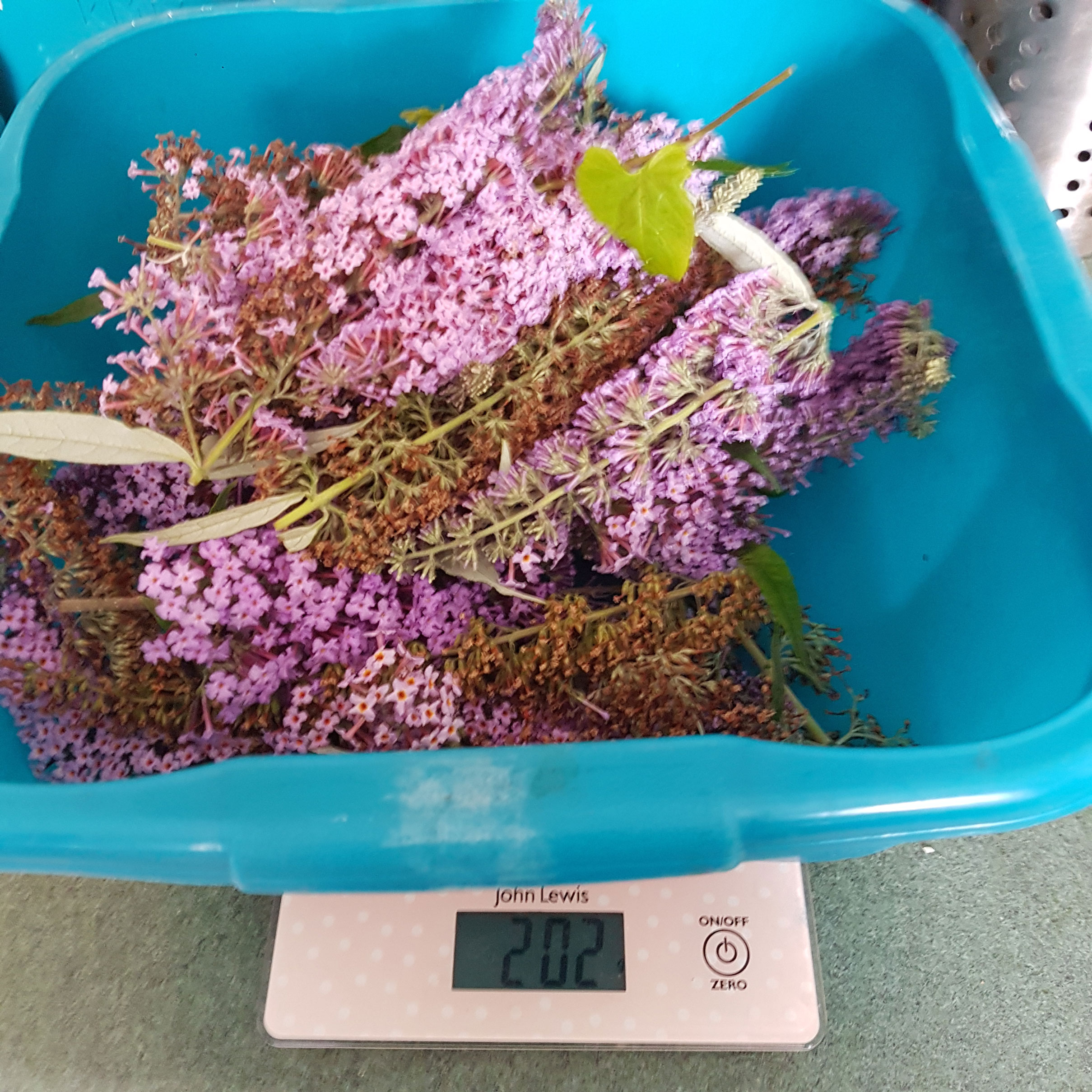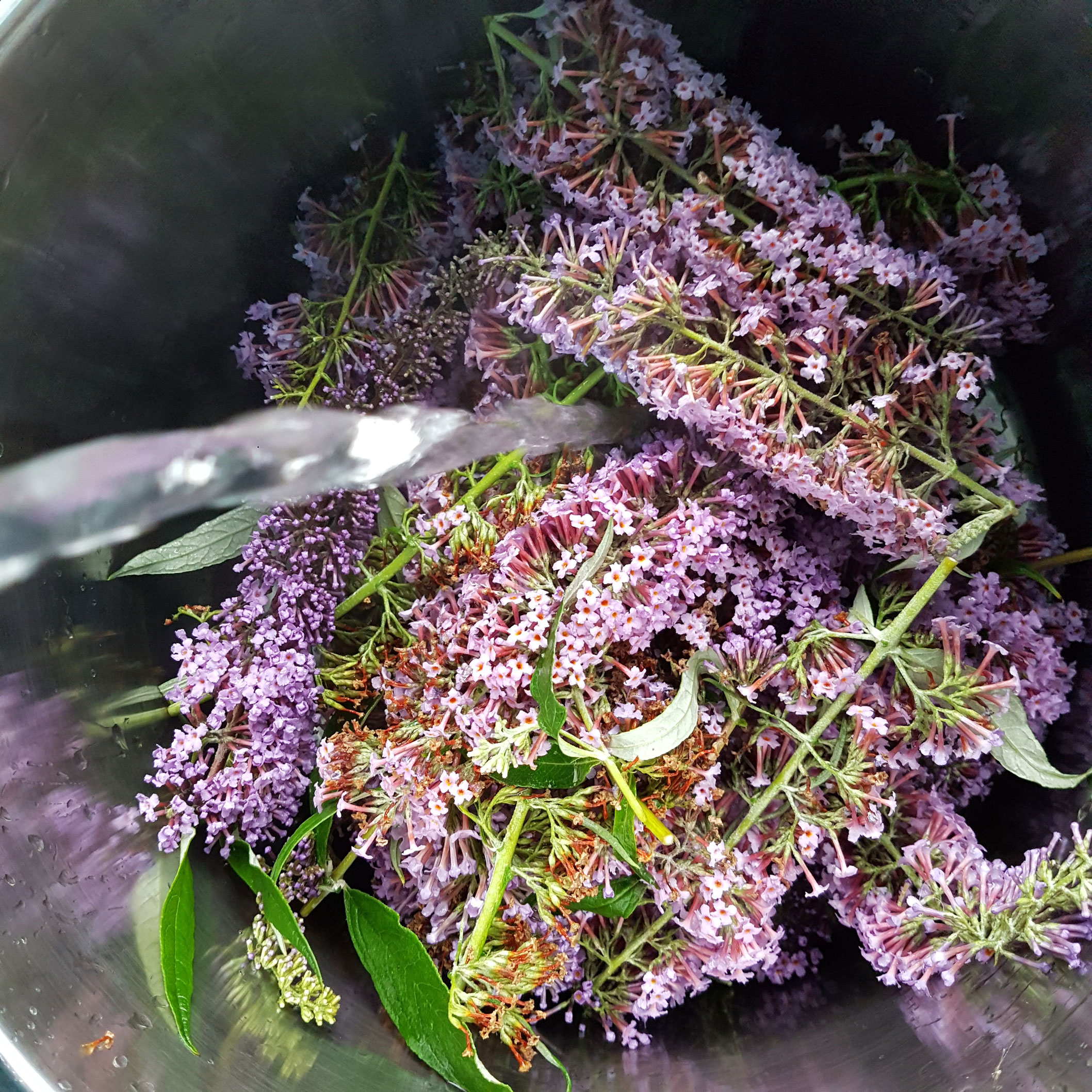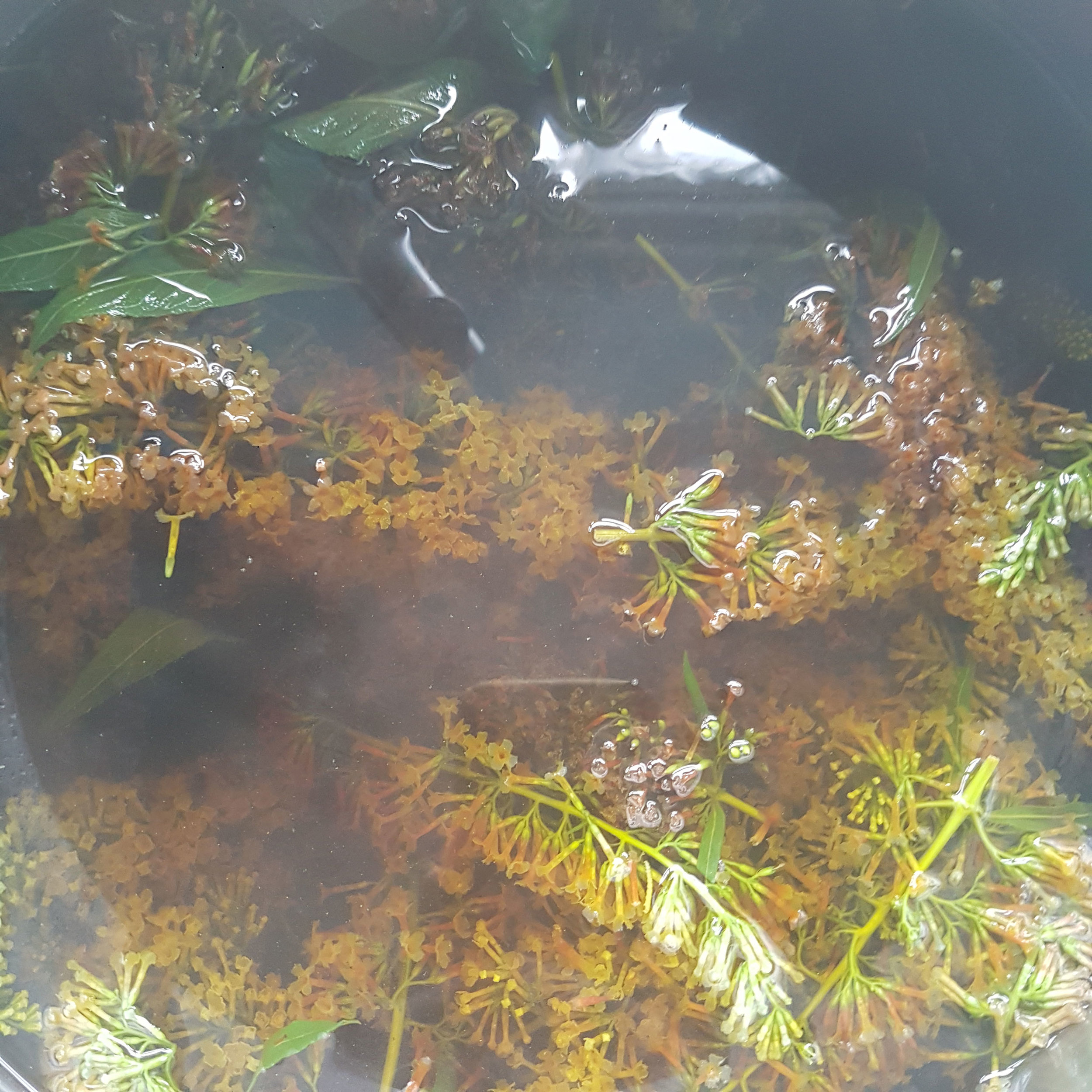Natural Dyeing with Buddleia Flowers
Note before reading: This blog was written in 2018, when I was studying for my MA (hence the Harvard referencing!). Where needed, I have edited these posts to correct any factual inaccuracies. This post was last edited Dec 2025.
This purple-flowering plant is everywhere where I live - I think it has something to do with being next to the old railway, now the Bristol to Bath cycle path, as it is notoriously invasive and so spread easily along the railway lines.
According to Woollen Flower:
It is recommended that gardeners and landscape managers remove the flower heads once the plant has done it’s lovely job of providing nectar for butterflies but before the plant sets seed in late summer/ autumn.
The flowers are certainly beginning to turn now so it seemed timely to pick some. I just trimmed the flowers rather than the whole plant, and from a very quick walk down to the cycle path, had just over 200g of Buddleia flowers.
I rinsed them, then poured boiling water onto them to extract the colour. Withing a few minutes the yellow colour came out. It's quite odd that a purple flower would produce yellow! The scrap of yarn I placed in gave promising results.
I usually let the dye liquid cool, strain then reheat with the mordanted yarn. However, the day I was making this dye coincided with the day I was filming my Crowdfunder video, and we wanted to film some dyeing in action and decided that the viewer would be able to understand the process more if the plant matter was still in the dye pot. The 'all-in-one' method is a valid one - I just choose not to use it because it can be a pain to pick out the bits of leaf and flower out of the yarn.
Burns, R. 2018. Buddleia 5. Photograph.
We were filming outside - my usual dye setup is inside but it was too dingy - so I put the alum mordanted yarn into the cold pot. The yellow colour stuck almost instantly so I didn't heat the liquid later on. The yarn was left overnight then rinsed - lots of bits of flower to pick out as predicted!
The liquid was still full of colour, and so I strained the liquid and put on the hob, adding another hank of alum mordanted yarn before heating to a simmer and holding at 80 degrees for an hour. The colour this time was a coppery orange/brown, very different to the cold dye! It was an unexpected result, natural dyeing never ceases to amaze me!
As this plant isn't mentioned in any of the dye books in my library, I suspect it might not be very lightfast. I will knit a swatch and leave it in the sun to see if it is or not. If it is, I have a potentially abundant free source of yellow dye on my doorstep!
References:
Burns, R. 2018. Buddleia 1-5. Photographs.
Woolen Flower. 2016. Dyeing with Buddleja. [online] Available from: http://www.woollenflower.com/dyeing/dyeing-with-buddleja/ [Accessed 19 August 2018]
Gupta, T. 2014. Buddleia: The plant that dominates Britain's railways. [online] Available from:https://www.bbc.co.uk/news/magazine-28196221 [Accessed 19 August 2018]





